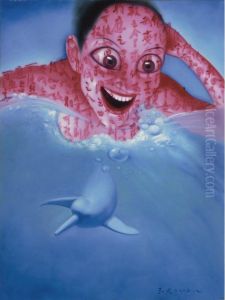Liu Jun Paintings
Liu Jun, a Chinese artist whose exact dates of death are not well-documented, was born in 1475 during the Ming Dynasty, a period renowned for its cultural prosperity and artistic achievements. His contribution to Chinese art, particularly in the realms of painting and calligraphy, reflects the era's sophisticated aesthetic values and technical prowess.
Liu Jun's work is characterized by its meticulous attention to detail and the vibrant life imbued into each piece, whether it be landscapes, figures, or bird-and-flower paintings. He was particularly adept at capturing the essence of his subjects with a delicate and refined brushwork that is both expressive and precise. This skill made his artworks highly valued among his contemporaries and sought after by collectors and art connoisseurs in the centuries that followed.
Despite the scarcity of detailed biographical information, Liu Jun's legacy in the art world is preserved through his surviving works and mentions in historical texts on art. These sources praise his innovative techniques and his ability to convey profound beauty and harmony through his art. His paintings not only provide insight into the artistic trends and cultural values of the Ming Dynasty but also continue to influence and inspire modern artists and scholars interested in traditional Chinese art.
The lack of records regarding Liu Jun's death and the later years of his life adds an element of mystery to his biography. However, the enduring appeal of his art ensures that his name remains prominent in discussions of Chinese art history. Through his contributions, Liu Jun exemplifies the enduring spirit and creativity of Ming Dynasty artists, making him a significant figure in the rich tapestry of China's artistic heritage.
